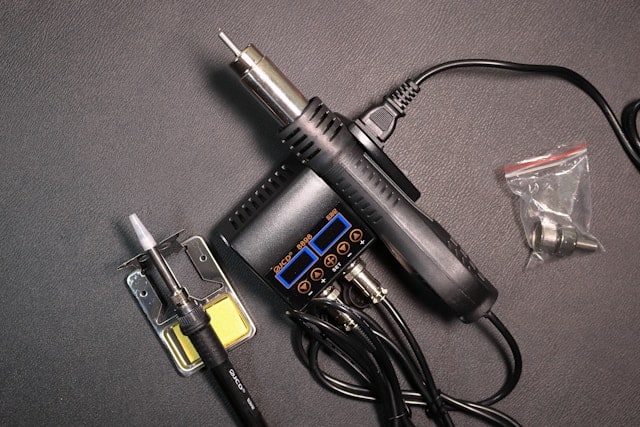What Are the Advances in Micro-Electro-Mechanical Systems (MEMS) for Wearable Tech?

In the realm of wearable technology, Micro-Electro-Mechanical Systems (MEMS) are forging a path for a revolution. MEMS are tiny devices that combine both mechanical and electronic components. They’re designed to sense, control, and act upon the world in a variety of applications. With their reduced size, improved performance, and enhanced functionality, MEMS are transforming numerous sectors, especially wearable technology. This article will explore the advances in MEMS, their applications in wearable tech, and an analysis of the global MEMS market.
Understanding MEMS: An Overview
MEMS, a technology that emerged in the late 20th century, is a process technology used to create tiny integrated devices or systems that combine mechanical, optical, and fluidic elements with electronics. The most recognisable MEMS devices are sensors and actuators. MEMS sensors include accelerometers, pressure sensors, and microphones, while MEMS actuators include micromirrors for light modulation and micro pumps for fluid control.
En parallèle : What’s New in Nanostructured Coatings for Corrosion Prevention in Electronics?
These devices are renowned for their small size, but their impact is significantly larger. MEMS technology is found in products from smartphones to medical devices, and it’s increasingly being used in the burgeoning field of wearable technology.
The Role of MEMS in Wearable Tech
Wearable technology is a growing market sector, making its mark in areas such as fitness, health, and entertainment. MEMS devices have become key components in wearable devices, given their ability to provide feedback about the physical world in small, power-efficient packages.
Avez-vous vu cela : Unveiling the excitement of your wish mystery box adventure
One common type of MEMS device found in wearable tech is the accelerometer. This sensor measures acceleration forces, which can be used to determine speed, orientation, and even gestures. For example, in fitness trackers, accelerometers monitor the wearer’s movement to track steps or to detect falls.
MEMS microphones are another staple in wearable tech, enabling voice control functions in smartwatches and fitness trackers. These tiny devices convert sound into an electrical signal, enabling voice-recognition software to function.
Pressure sensors, another type of MEMS, are also significant in wearable technology. They can be used to measure altitude, enhancing the functionality of fitness trackers by providing data on how many flights of stairs a wearer has climbed.
Global MEMS Market Analysis
The global MEMS market has experienced exponential growth in recent years. This is due to the integration of MEMS into various applications, including wearable tech. According to a recent market analysis, the global MEMS market size was valued at $48.7 billion in 2023 and is expected to reach $127.4 billion by 2027, growing at a CAGR of 21.5%.
The analysis also suggests that North America dominates the global MEMS market share due to the high adoption rate of MEMS-based wearable devices in the region. Moreover, the presence of leading MEMS manufacturers also contributes to the market’s growth in this area.
In terms of market segmentation by device type, the sensors segment held a dominant position in 2023, and it continues to grow with advancements in wearable technology.
Technological Advancements in MEMS
Rapid advancements in MEMS technology have been instrumental in their widespread adoption in wearable tech. For instance, the development of MEMS with lower power consumption has extended the battery life of wearable devices, a critical factor for user acceptance.
Moreover, MEMS devices are becoming smaller and lighter, allowing for more compact and comfortable wearable tech designs. This also expands the potential applications for wearable devices, as they can be designed to be less intrusive and more user-friendly.
Another significant advancement is the improvement in the robustness and reliability of MEMS devices. This has allowed wearable tech to be used in more demanding environments and applications, such as outdoor sports and healthcare monitoring.
The Future of MEMS in Wearable Tech
Looking ahead, the future of MEMS in wearable tech appears promising. The demand for wearable devices, especially in healthcare and fitness, is on the rise – and with it, the need for advanced MEMS sensors.
Emerging applications of MEMS in wearable tech include the integration of biochemical sensors in fitness trackers to monitor hydration or glucose levels, or the incorporation of MEMS-based UV sensors in smartwatches to alert wearers to excessive sun exposure.
Moreover, the push towards the Internet of Things (IoT) will likely drive further growth in the MEMS market. As more objects become internet-connected, the need for MEMS sensors to monitor and control the environment will increase.
Overall, the advances in MEMS technology are powering the wearable tech revolution. Their small size and high-level performance are creating new possibilities for wearable devices, enhancing our interaction with the world and bringing us one step closer to a more connected future.
Key Players in the Global MEMS Market
There are several key players in the global MEMS market who are accelerating the rapid growth and adoption of MEMS technology. While the market is quite diverse, some companies stand out due to their innovative solutions and significant market share.
One of the leading MEMS manufacturers is STMicroelectronics, a Swiss-Italian multinational electronics and semiconductor manufacturer. They produce a wide range of MEMS products, including accelerometers, gyroscopes, magnetometers, and pressure sensors, all of which are widely used in wearable tech. Their innovative solutions, such as ultra-low-power MEMS sensors, have proven essential for improving the battery life of wearable devices.
Bosch Sensortec, a subsidiary of the German multinational engineering and technology company Bosch, is another noteworthy player in the MEMS sector. They specialize in micro electro mechanical systems, offering a comprehensive portfolio of MEMS sensors and solutions for smartphones, tablets, and wearable devices.
Texas Instruments, a major American technology company, is also contributing significantly to the MEMS market. Their range of MEMS-based products include infrared temperature sensors, micro mirrors for projectors, and digital microphones, all critical components in various wearable technologies.
Lastly, the American company Analog Devices is renowned for its high-performance MEMS accelerometers and gyroscopes. Their devices are known for their robustness and reliability, making them suitable for demanding applications in healthcare monitoring and outdoor sports wearable tech.
Conclusion: MEMS Powering the Wearable Tech Revolution
In conclusion, Micro-Electro-Mechanical Systems (MEMS) have undeniably become a significant driving force in the wearable tech revolution. Their ability to combine mechanical, optical, and fluidic elements into tiny, power-efficient packages has opened up new possibilities for wearable technology, making them an integral part of our daily lives.
The MEMS market size is expanding at an impressive rate, with North America leading the way in terms of market share. This trend is expected to continue, fueled by the increasing demand for wearable devices in sectors such as healthcare, fitness, and entertainment.
The key players in the market, including STMicroelectronics, Bosch Sensortec, Texas Instruments, and Analog Devices, are consistently pushing the boundaries of what is possible with MEMS, paving the way for even more advanced and innovative applications in the future.
From monitoring our health and fitness to enhancing our interaction with the world through the Internet of Things (IoT), MEMS technology will undoubtedly continue to play a pivotal role in shaping our connected future. Therefore, it is vital that we continue to invest in and explore the potential of MEMS, in order to fully realize their transformative power.
